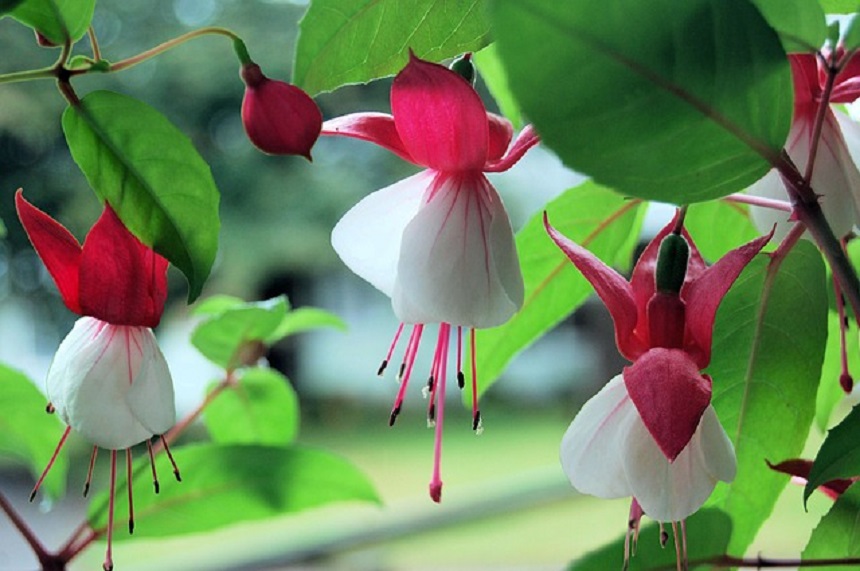Fuchsias need little introduction. They have long been admired as a favourite of the horticultural world and they add vibrancy and life any space they inhabit. Loved by garden insects and birds alike, Fuchsias truly deserve a place in any garden and they come in many forms including shrub, standard and bedding varieties. Fuchsias can be grown in beds, borders, hanging baskets and make wonderful container plants.
Fuchsias are renowned as easy to grow plants and are a favourite plant of many gardeners and nurserymen for their willingness to be propagated. When you take your plants home you should plant them in to their final positions as soon as physically possible. Of course this isn’t always possible and if you cannot plant them out immediately you should try to ensure that your plants are watered regularly and kept in a cool and bright space until planting is possible.
Fuchsias are versatile plants but they do enjoy a position in full sun. Take care to allow plants some degree of shade in the middle of the day as extreme sunlight on summer days can cause plants to wilt and blooms to fade or drop prematurely. Depending on the individual plants’ growing habit, whether plants are trailing, bush or other, they will grow well in beds, borders and containers and there really is a Fuchsia for every need.
Fuchsias grow well in most soils but they do require a nicely dug or deep, fertile and moist soil to thrive. You can improve your soil by digging it over, adding a slow release fertiliser and improving drainage. Add plenty of organic matter, such as well-rotted garden compost, well-rotted horse manure or multi-purpose compost.
If growing plants in containers you may also wish to add water retaining gel, which will hold water ensuring plants do not dry out completely.
Some care will be necessary to keep Fuchsias at their best but this is relatively easy to achieve by following a few simple instructions. Plants will require watering after planting to ensure that they do not dry out and to provide them with the necessary conditions to establish well. Fuchsias do not grow well in waterlogged conditions so be careful not to over water.
Apply a general fertiliser at intervals in the growing season and you may also wish to apply a liquid seaweed foliar feed also. As plants flower on new growth you can pinch out growing tips early in the season to encourage branching, a bushier plants and more flower buds.
Not all Fuchsias are hardy but if you are planning to leave your Fuchsias outdoors through winter you should ensure that upon planting you plant the root ball deep with around 5cm (2″) of soil covering the root ball. This will give the plant a degree of protection from frost allowing it a chance to grow again from the base if top growth is damaged.

